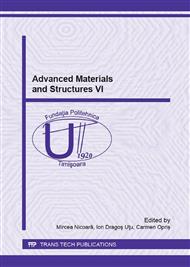p.106
p.110
p.116
p.120
p.126
p.132
p.138
p.144
p.149
Cranioplasty Based on Modern Methods for Personalized Design and Manufacturing
Abstract:
A patient with severe head trauma must was scheduled for cranioplasty. Due to the large defect with complex profile, the surgeons decided to ask for help from engineers who designed the cranioplasty plate using Mimics© and 3-matic© (software produced by Materialise NV) and 3D printed the prototype of the skull and the cranioplasty plate using a ZPrinter 310 machine (patented by MIT). The cranioplasty plate was manufactured following the prototype using Polyether Ether Ketone (PEEK). The surgery was a success as the first intervention using a complex research team for the Central Military Hospital from Bucharest. The paper presents the case evolution and the engineering processing steps (design and manufacturing) of the cranioplasty plate obtaining.
Info:
Periodical:
Pages:
126-131
Citation:
Online since:
August 2016
Keywords:
Price:
Сopyright:
© 2016 Trans Tech Publications Ltd. All Rights Reserved
Share:
Citation:


